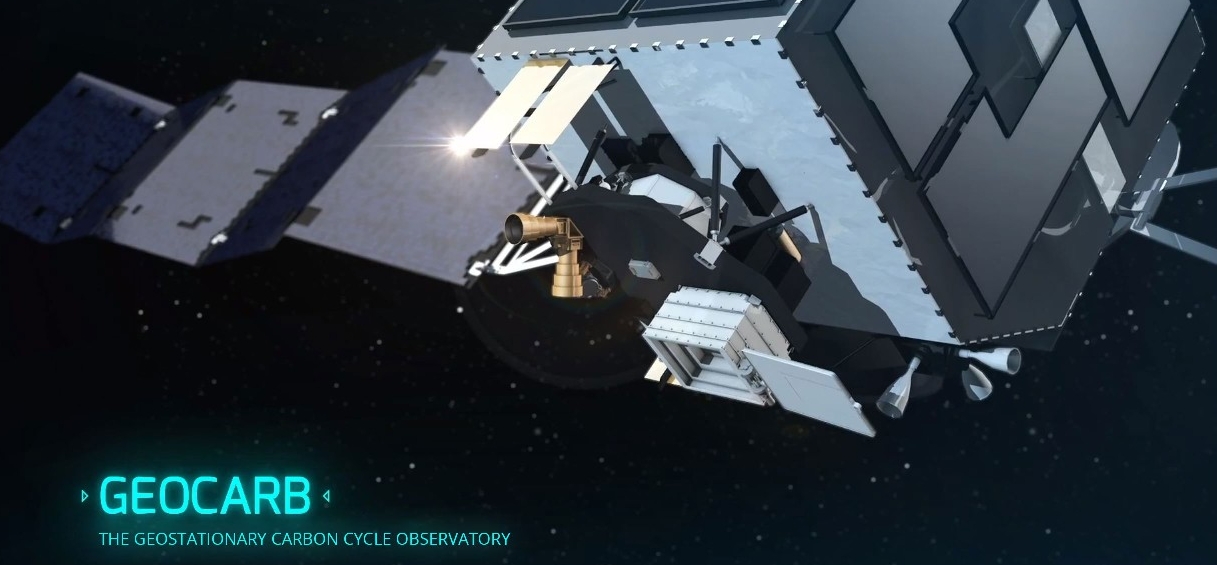
The Geostationary Carbon Cycle Observatory (GeoCarb), a first-of-its-kind space-based earth science mission, will study how and why the global carbon cycle is changing, and monitor plant health and vegetation stress throughout the Americas.
The GeoCarb instrument consists of a telescope for light collection, optics and grating spectrometer, star trackers and electronic boxes. The instrument is optimized to deduce concentrations of carbon dioxide, methane and carbon monoxide, as well as Solar-Induced Fluorescence (SIF) from Geostationary Orbit.
Denser measurements within time and space over land in the Western Hemisphere are required to distinguish between the various sources and sinks of carbon dioxide.. We can enhance current carbon-cycle knowledge with millions of daily observations that are possible through a space-based instrument like GeoCarb.
The GeoCarb observatory will provide a record number of high-quality measurements of carbon dioxide, methane and carbon monoxide in the atmosphere in unprecedented detail. With these observations, scientists can begin to unravel the many sources and sinks in the carbon cycle.
The unique spectrometer on the observatory will produce daily scans of landmasses in the western hemisphere. Shorter revisit times and larger coverage area, made possible by Geostationary Orbit, will deliver observations of the carbon cycle that are beyond the reach of observatories currently in orbit.
GeoCarb will measure the carbon cycle as the western hemisphere breathes in and out every day — watching how Earth’s seasons change through the eyes of the biosphere.
Solar Induced Fluorescence (SIF) is a direct indicator of photosynthesis and shows the impact of environmental stressors such as drought - an important measure of ecosystem health.